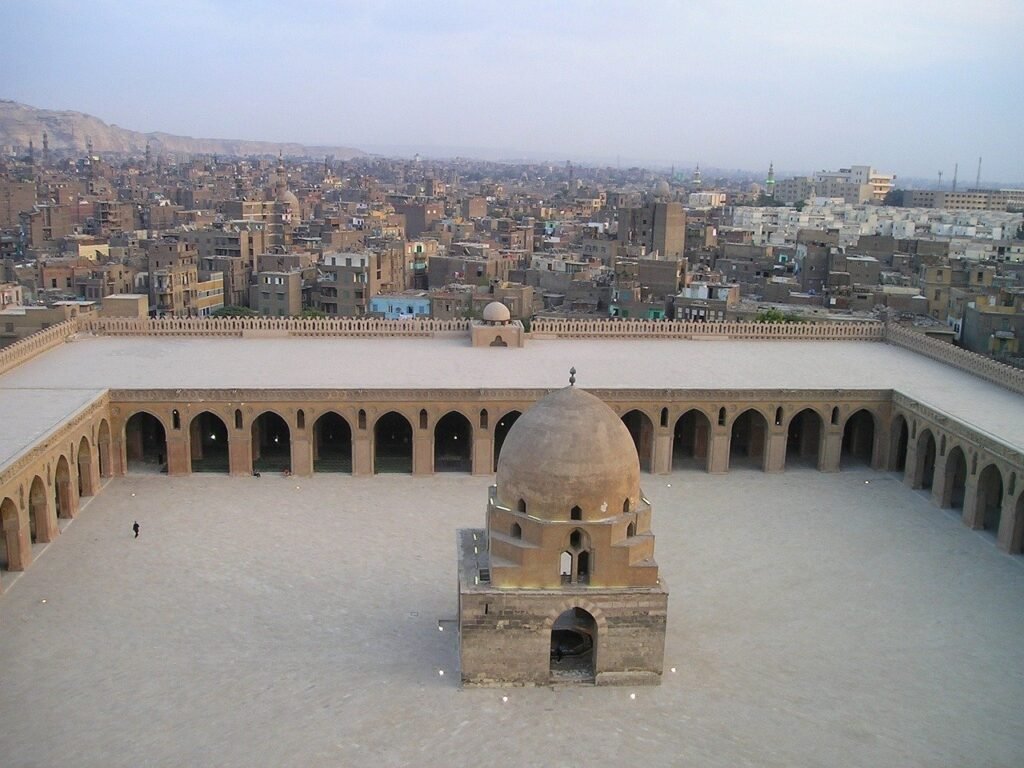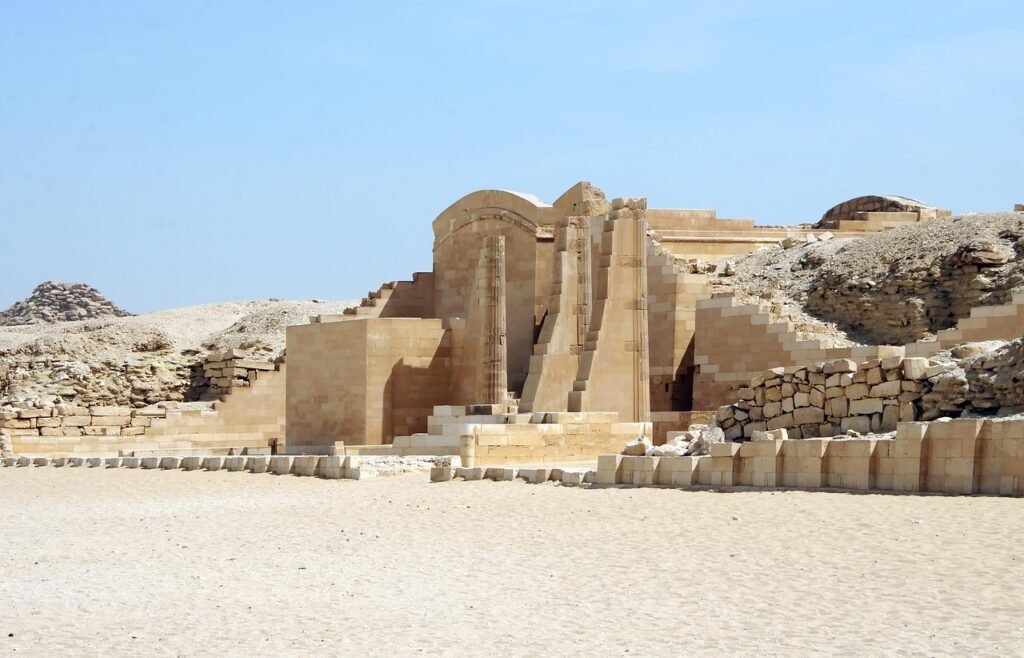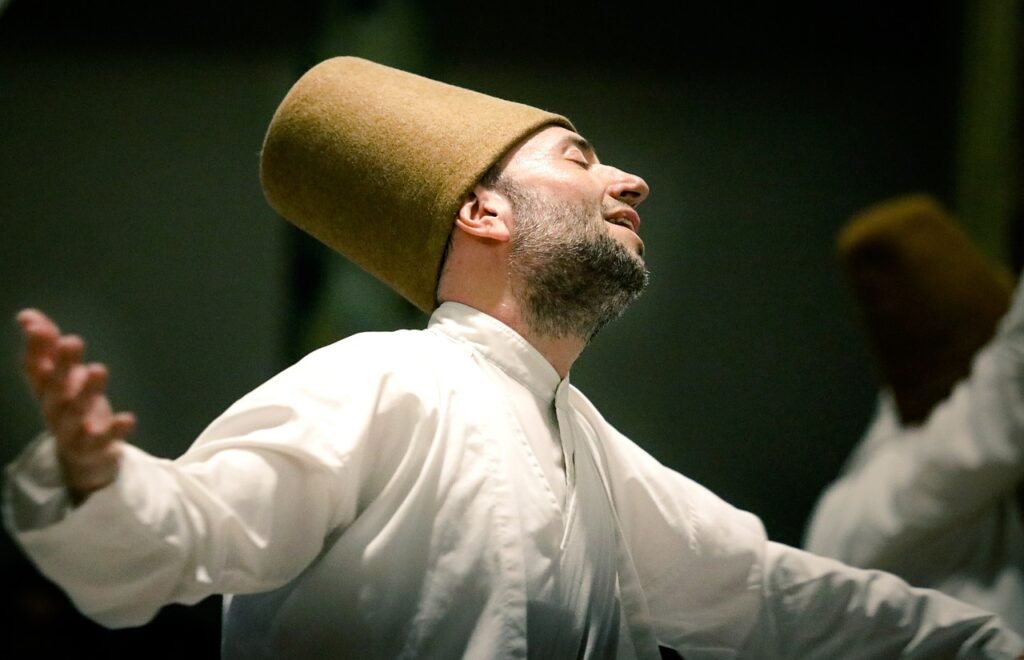Discovering Cairo’s Timeless Wonders
Cairo is a historic and vibrant city, blending ancient charm with modernity. This Cairo itinerary takes you through bustling streets filled with the aroma of spices and the energy of its markets. The city’s architectural marvels, like the Pyramids of Giza, stand as a testament to millennia of civilization. A visit to the Great Mosque offers a glimpse into its Islamic heritage, where monuments, mosques, and ruins tell stories of pharaohs and rulers.
As you follow this Cairo itinerary, expect a sensory and cultural adventure. With every step, Cairo’s monuments, souks, and historical sites reveal a kaleidoscope of tradition. Whether you’re a solo traveler or on a short trip, the city’s must-visit locations will leave you in awe. This five-day journey uncovers hidden gems, offering an unforgettable travel experience through Egypt’s heart. Also read this salt-lake
Cairo – A City of Contrasts
Cairo, located in the Northeastern corner of Africa, sits at the crossroads of the Middle East, blending rich influences from both regions. Walking through its dusty alleyways, you’ll witness a striking clash of old versus new—modern skyscrapers beside buildings decaying, and highways leading to the Great Pyramids of Giza in the background. The streets are chaotic, filled with vendors, honking traffic, and diverse fashion—young women in jeans and t-shirts, while older women wear a long sheath.
Situated on the banks of the Nile River, Cairo’s strategic position has made it a hub of trade, culture, and history for centuries. Just 130 kilometres inland from the Mediterranean Sea and 1700 kilometres west of the Red Sea, it serves as the perfect base for exploring Egypt’s wonders. From the coastal beauty of Alexandria to the ancient temples of Luxor and Aswan in the south, each visit to Cairo promises a new experience.
Getting to Cairo with Ease
Most travelers heading to Egypt arrive at Cairo International Airport (CAI), the country’s busiest airport and primary gateway. The city is well-connected with direct flights from Europe, making it easy to get there. If you’re flying from Canada, expect a 9 hour flight from Vancouver to London, followed by a quick 5 hour flight to Cairo. As one of Africa and the Middle East’s major travel hubs, Cairo serves as a great layover city, linking many parts of the world through connections to Europe, Africa, and the Middle East.
Once you land, the airport is just a 25 minute drive from downtown Cairo. You can take a taxi, book an Uber, or arrange transportation through your hotel or a private transfer. However, if you want to wake up with a view of the pyramids, staying in Giza, about an hour from the airport, is a great option.
Best Places to Stay in Cairo
During my first trip to Egypt, I made Cairo my base and stayed the entire time at the Ritz. The city offers endless places to stay, from small boutique hotels and hostels to Airbnb and mid-size hotels. If you seek luxurious hotels, options like The Nile Ritz-Carlton, Four Seasons Hotel Cairo at Nile Plaza, St. Regis Cairo, and Marriott Mena House offer incredible stays, including pyramid view rooms.
For glorious rooftop pyramid views, the best tip is to stay in Giza, where there are plenty of rooftops overlooking the pyramids. This allows you to enjoy the Sound and Light show right from where you’re staying. I personally rely on Booking.com for accommodations and have always had great experiences.

Best Time to Visit Cairo
Ideal Months for a Comfortable Trip
Cairo is a year-round destination, but the best time to visit is from October to April, when comfortable temperatures range from 15 to 26 degrees Celsius—perfect for touring the city’s many attractions. However, December to February is the peak season, bringing large crowds and higher prices, while October, November, March, and April offer a quieter experience with pleasant weather.
Challenges of Visiting Cairo in Different Seasons
If visiting in March and April, be aware of khamsin winds, hot sandy winds that can reduce visibility and affect air quality. Cairo’s summer holidays from July to September can be extremely hot, with temperatures reaching 35 to 40 degrees Celsius, making sightseeing challenging. However, fewer tourists mean lower prices for those willing to brave the heat.
Seasonal Breakdown for Visiting Cairo
- Spring (March to May): Days are warm, but sandstorms can occur. April and May are ideal for those looking to spend time in the sea, with temperatures ranging from 22°C / 71°F to 34°C / 93°F.
- Summer (July to September): The hottest time of year, with sweltering temperatures of 40°C / 104°F, though the city is less crowded.
- Fall (October to December): The best season to visit, with cooling temperatures, though more tourists lead to higher prices.
- Winter (January to March): December travel offers warm but not hot weather, but the Christmas crowds bring sky-high prices. If you want to avoid crowded places, this may not be the best time.
For the perfect balance between weather, crowds, and affordability, the best months to visit Cairo are October and November.
Guides in Egypt
Why Hiring a Guide is Worth It
As a solo female traveler, I usually prefer to travel alone, but in some destinations, hiring a local guide makes all the difference. Egypt, with its rich history, is one of those places. Having a knowledgeable guide helps bring historical sites to life, offering insights that you might otherwise miss. That said, not all guides are equal, so choosing the right one is crucial.
Cairo: A City of Ancient and Modern Wonders
Cairo is a city that blends the ancient and modern like no other. From the Pyramids of Giza, which stand as a testament to thousands of years of history, to bustling bazaars filled with the aroma of spices and the sounds of vibrant life, it is a sensory adventure waiting to be explored. Whether you are following an ultimate Cairo itinerary or wandering through the city, there’s something captivating at every turn.

How I Ended Up in Cairo by Mistake
My journey to Cairo was quite unexpected. While searching for flights from Bilbao, Spain, to Nairobi, Kenya, I discovered that the cheapest option required a layover in Cairo. If I stayed five nights, I would save over $500 on my airfare, making it a no-brainer to explore Egypt while keeping my budget intact. My goal was to spend less than $500 in Cairo while uncovering Egypt’s timeless wonders—and it turned out to be one of the best travel decisions I’ve ever made!
Disclaimer: Some links in my blog are affiliate links. This means that if you make a purchase through them, I may earn a small commission at no extra cost to you. These commissions allow me to continue creating helpful travel guides for fellow adventurers!
Is 6 Nights Too Long in Cairo?
Exploring Cairo Beyond the Pyramids
After booking my flights, I turned to a Facebook travel group for Cairo recommendations. Surprisingly, over 100 replies suggested that there wasn’t much to do beyond the Pyramids of Giza. But I refused to believe that was true! Determined to uncover more, I crafted my own Cairo itinerary, proving that this city has much more to offer than just one attraction.
Five Reasons to Extend Your Stay in Cairo
1. Experience the Pyramids at Different Times of Day
Seeing the Pyramids of Giza isn’t a one-time experience. Staying longer lets you admire them at golden sunrise, under the intense midday sun, and during the Sound and Light Show at night. Each visit brings a new perspective and an unforgettable sense of awe.
2. Discover Cairo’s Food Scene, Bite by Bite
Cairo’s food scene is a paradise for food lovers! From savoring koshari at a street stall to enjoying a Nile-side dining experience, staying longer lets you fully explore Egyptian delicacies. You can even indulge in traditional sweets or take a cooking class to bring the flavors of Egypt home.
3. Blend Iconic Sites with Hidden Gems
A longer stay allows you to see both iconic sites and hidden gems. Visit the Egyptian Museum and the Citadel, then wander through Islamic Cairo’s medieval mosques, explore the history of Coptic Cairo, and discover the artistic side of the city in Zamalek’s art galleries. My ultimate Cairo itinerary balances famous attractions with unique local experiences.
Getting Around Cairo After Your Arrival
First Transfer Experience in a New Country
Arriving in a new country can be stressful, especially when figuring out your first transfer. To avoid uncertainty, I chose to book a transfer through my hotel. Unfortunately, this turned into a bad experience, as my driver’s behavior made for an uncomfortable ride. While this was an isolated incident, I always strive to be honest about my travels, so I decided to share my experience.
Other Options for Airport Transfers
If you believe I was just unlucky, there are several other ways to reach the city. You can try airport taxis if you’re comfortable with haggling, or opt for private transfer services for a more reliable experience. Uber is also a great alternative, offering convenience and upfront pricing. Additionally, the Cairo Metro is soon expected to connect the city to the airport, providing an affordable option for travelers.
Ready to Explore Cairo?
Now that we’ve covered how to get to the city, let’s dive into the ultimate 6-day Cairo itinerary, packed with must-see sights, hidden gems, and unforgettable experiences!
My Day-by-Day Cairo Itinerary
How My Itinerary Took Shape
I arrived in Cairo without much of a plan, but as the week unfolded, unexpected opportunities led to an amazing journey. Thanks to Rami and Khaled, who ensured I always had an adventure lined up, I ended up with a top-notch itinerary that covered Cairo’s most iconic spots.
A Perfect Introduction to Cairo
This Cairo itinerary is an ideal introduction to the city, featuring all the must-see places that every traveler should experience. However, I didn’t get to explore Coptic Cairo or visit the Step Pyramid, which left me feeling like I had missed experiences.
Planning a Return to Cairo
I already know I will return to Cairo to complete my journey and explore what I couldn’t see this time. In the meantime, I’ve shaped my experiences into an epic 6-day Cairo itinerary so you can make the most of your trip!
Day 1: The Pyramids of Saqqara and Dahshur
Why You Shouldn’t Skip Saqqara and Dahshur
Many travelers focus solely on Giza’s pyramids, but the Pyramids of Saqqara and Dahshur offer a more relaxed experience with fewer crowds. Unlike Giza, where touts and scams can be a concern, here you can truly immerse yourself in Ancient Egypt without distractions. Hiring a private driver made it easier to explore these lesser-known sites before heading to Giza.
Exploring Saqqara – Egypt’s Oldest Necropolis
Saqqara, located west of Cairo, is home to Egypt’s largest archaeological site, dating back to the Third Dynasty nearly 5,000 years ago. It’s a must-visit for history buffs who want to see where pyramid construction began. The drive from Cairo to Giza is just 20 minutes, but with unpredictable traffic, planning extra time is key.

The Giza Experience – Pyramids, Sphinx & Best Photo Spots
The Giza Plateau is where you’ll find the Great Pyramid and the iconic Sphinx. While the Sphinx has a designated viewing area, the best photos can be taken before entering the ticketed section. For the pyramids, avoid the crowded Great Pyramid entrance and instead, walk around the structure for clearer photo opportunities. Driving further out offers stunning panoramic views of the entire pyramid complex.
Dinner with a View – A Magical Evening in Giza
After a long day of sightseeing, relax with dinner overlooking the pyramids. 9 Pyramids Lounge is a fantastic choice, offering panoramic views of the Giza Plateau with traditional Egyptian cuisine like grilled meats and tagines. For an upscale experience, Kebabgy at Mena House Hotel provides a luxurious setting with breathtaking pyramid views as the evening lights turn on.
A Different Experience – Get Your Guide Tour
I personally explored Giza with a Get Your Guide tour, which also included the Egyptian Museum and Khan El Khalili Bazaar. However, I found it overwhelming to fit all these activities into one day. That’s why I recommend separating them for a more enjoyable Cairo itinerary.
Day 2 – Egyptian Museums and the Citadel
The Grand Egyptian Museum & The Museum of Egyptian Antiquities
Start your day at the Grand Egyptian Museum (GEM), home to some of Egypt’s most treasured artifacts, including those of King Tutankhamun, the ‘Boy King.’ This museum offers breathtaking views of the Pyramids, making it an unmissable experience. If time permits, visiting both the Grand Egyptian Museum and The Museum of Egyptian Antiquities in one day will provide a deeper understanding of Egypt’s rich history. Seeing ancient Egyptian artifacts up close is an unforgettable experience, especially for history enthusiasts.

The Royal Mummies & The Citadel of Salah El-Din
For those fascinated by ancient rulers, the Royal Mummies’ Hall at the National Museum of Egyptian Civilization (NMEC) is worth a visit, as it now houses the royal mummies previously displayed at The Museum of Egyptian Antiquities. Later, head to the Citadel of Salah El-Din, a striking medieval Islamic-era fortress in the heart of Cairo. This historic site is not only an architectural wonder but also an important landmark of Egypt’s past.
Cairo Tower & Al-Azhar Park
If you’re visiting the old Egyptian Museum, take a short 20-minute walk or Uber ride to Cairo Tower. From its observation deck, you’ll be rewarded with a panoramic view of Cairo. You can enjoy lunch at the café inside or at a nearby restaurant. In the afternoon, unwind at Al-Azhar Park, Cairo’s greenest space. Originally a landfill, it was transformed in the mid-2000s into a stunning public park. A small entrance fee applies, but both tourists and locals visit to enjoy its beauty.
Khan El-Khalili – Cairo’s Iconic Bazaar
End your day by exploring Khan El-Khalili, one of the most famous markets in the Middle East. Just a 20-minute walk from Al-Azhar Park, this vibrant bazaar is a maze of stalls selling gold, jewelry, scarves, antiques, perfumes, artwork, and even frankincense. Here, not only can you shop, but you can also witness artisans creating their masterpieces, making it an authentic and immersive Egyptian experience.

Day 3 – Cairo’s Historical and Cultural Heart
Exploring Ancient Egypt and Local Hospitality
Immerse yourself in the rich history and vibrant culture of Cairo as you explore ancient artifacts, bustling bazaars, and authentic Egyptian cuisine. If you’re looking for a stay near the Great Sphinx, the Pyramids Temple Guest House is an excellent choice. Recently renovated, this guest house offers air-conditioned rooms with balconies, garden views, and modern amenities such as free WiFi, a fully equipped kitchen, and an outdoor fireplace. Guests can enjoy buffet and continental breakfast options, as well as access to a mini-market and coffee shop. For those who love to explore, activities like cycling and walking tours are available, and the property also offers a babysitting service. Located 1.1 miles from the Giza Pyramids and 9.3 miles from Cairo Tower, it provides convenient access to major attractions.
Morning: The Grand Egyptian Museum
Start your day with a visit to the Grand Egyptian Museum, one of the most anticipated museum openings in recent years. Though it wasn’t open at the time of my visit, it promises to be a groundbreaking addition to Egypt’s historical landscape. Home to countless ancient artifacts, this museum will offer visitors an unparalleled look into Egypt’s glorious past.

Afternoon Break: El Fishawi Café in Khan el-Khalili
Take a break from sightseeing and experience Cairo’s café culture at El Fishawi Café, also known as the Café of Mirrors. As one of Cairo’s oldest and most beloved cafes, it’s the perfect spot to enjoy a traditional mint tea or Turkish coffee while taking in the lively surroundings. Though it’s a well-known tourist spot, it’s worth a visit for its mirror-lined walls, cozy seating, and excellent people-watching opportunities. If you’re not a fan of tea or coffee, I highly recommend trying the mint lemonade!
Evening: Tannoura Sufi Dance at Wekalet El Ghouri
End your day with an unforgettable experience at the Wekalet El Ghouri Arts Centre, where you can watch a Tannoura Sufi dance performance. This ultra-colorful display of whirling dervishes is mesmerizing, as dancers twirl non-stop for nearly an hour in perfect rhythm. The best part? Entry costs less than $1, making it one of the most affordable yet remarkable experiences in Cairo. Relax, enjoy the rhythmic music, and witness a performance that beautifully encapsulates Egypt’s rich artistic traditions.

Day 4: The Best of Cairo
Unveiling Cairo’s Hidden Charms
At first glance, Cairo can feel overwhelming—polluted, congested, and chaotic. But beneath its thick cloud of smog lies a city bursting with architectural wonders, archaeological treasures, and rich culinary experiences. Though I spent only a day and a half truly exploring the city, it undoubtedly deserves more time. Some of the must-visit locations include the Coptic Quarter, the Citadel, and the Islamic Quarter. For food lovers, dining at Fasahet Soumaya and the Naguib Mahfouz Café is highly recommended, offering a true taste of Egyptian flavors.
The Coptic Quarter – A Peaceful Escape
Amid Cairo’s chaotic energy, the Coptic Quarter stands as an oasis of tranquility. Known as the oldest neighborhood in Cairo, it is the heart of Egypt’s Coptic Christian community. This car-free area is a maze of ancient churches and monasteries, offering a fascinating contrast to the rest of the city. Over 2,000 years ago, Coptic Cairo sat along the Nile River, serving as a strategic hub for the city’s early growth. While the river has since shifted westward, this district remains home to some of Cairo’s most significant historical landmarks.
The Church of St. George – A Historic Gem
One of the highlights of Coptic Cairo is the Church of St. George, which was the first stop on our self-guided walking tour. Located near the Mar Gigris Metro Station, it stands adjacent to the St. George Monastery. This massive structure is the principal Greek Orthodox church of Egypt, and its stunning stained-glass windows and incense-filled interiors create a serene and spiritual atmosphere. Originally built in the 10th century, the church was destroyed by fire, and the current structure dates back to 1904. It remains a must-visit site for those interested in Cairo’s religious and historical legacy.

Day 5: Alexandria Day Trip
A Historic Mediterranean Escape
Located along Egypt’s Mediterranean coast, Alexandria is the country’s second-largest city and just a 2.5-hour drive from Cairo. With its rich Roman history and stunning seaside location, it offers a perfect day trip for those eager to explore beyond the capital. Visitors can wander through ancient ruins, admire architectural marvels, and take in the coastal charm of this fascinating city.
Exploring Ancient Roman Sites
Alexandria is home to remarkable Roman landmarks, including the Roman Catacombs, an underground burial site showcasing intricate carvings and historical significance. Another must-see is Pompey’s Pillar, a massive red granite column standing as a symbol of Alexandria’s Roman heritage. These ancient sites provide a glimpse into Egypt’s Greco-Roman past.
The Mystery of the Library of Alexandria
One of the greatest wonders of the ancient world, the Library of Alexandria, once housed the most extensive collection of human knowledge before it was mysteriously destroyed. Scholars today still debate what happened to its priceless scrolls and manuscripts. Though the original library is lost, its legacy continues to inspire curiosity and admiration, making Alexandria a city of both history and mystery.
Day 5: Khan el Khalili Souk and Departure
Exploring Cairo’s Iconic Market
A visit to Khan el Khalili Souk is a must for travelers in Cairo. This bustling market is filled with local handicrafts, souvenirs, and traditional goods. While some shops, like papyrus and rug stores, may feel touristy, those looking for authentic Egyptian crafts will find a wide array of treasures.
A Local Shopping Experience
For those keen on purchasing rugs or papyrus, the souq offers a variety of options, but it’s best to explore beyond the typical tourist stops. The market provides a chance to engage with local artisans, discover handmade goods, and soak in the vibrant atmosphere before departing from Cairo.

Optional Activities & Essential Tips for Cairo Travelers
Optional Evening Activities
As a solo traveler, I didn’t do much in the evenings, but if you have extra time, consider catching the Giza Pyramids Sound and Light Show. This illuminated spectacle brings Egypt’s ancient wonders to life and is a unique way to experience the pyramids after dark.
Essential Tips for First-Time Visitors
Cairo is exciting but can be overwhelming for first-time visitors. Understanding basic Arabic phrases, local customs, and safety tips will enhance your experience. If you want to feel more prepared, check out my guide on “Essential Tips for First-Time Visitors in Cairo”, which covers everything you need to know for a smooth and enjoyable trip.
Food and Dining in Cairo
Cairo’s culinary scene is a delightful blend of traditional flavors and modern twists. From iconic Egyptian dishes like koshary and falafel to street food gems and upscale dining, the city has something for every taste—whether you’re a vegetarian, vegan, or an adventurous foodie.
For a comprehensive guide to must-try dishes, local dining recommendations, and hidden food spots, check out my post on “Food and Dining in Cairo”. It’s packed with insights to help you explore the best eateries and flavors Cairo has to offer.
Final Tips and Things to Know Before You Go
Before embarking on your Cairo adventure, a few essential tips can help ensure a smooth and enjoyable trip. Packing wisely is key to staying comfortable and prepared while exploring the city.
Packing Essentials for Cairo
Clothing
Cairo’s hot climate calls for lightweight, breathable clothing that keeps you cool while respecting local customs. Opt for loose trousers, long skirts, t-shirts, and carry a scarf or shawl for covering your shoulders and head when visiting religious sites.
Comfortable Footwear
From bustling streets to historic sites, Cairo requires sturdy, comfortable shoes. Walking shoes or trainers are ideal for handling city streets and desert terrain. Since mosques require shoe removal, slip-on shoes without laces can be more convenient.

Sun Protection
The Egyptian sun can be intense, especially when exploring outdoor sites like the pyramids. Pack sunglasses, a wide-brimmed hat, and high SPF suncream to stay protected from the heat.
A Water Filter
Tap water in Cairo is not safe to drink, and relying on bottled water creates plastic waste. A filter bottle like LifeStraw is a great alternative to reduce plastic consumption while ensuring clean drinking water.
Portable Charger
Cairo’s heat and long sightseeing days can drain your battery quickly. A portable charger is essential, especially if you’re capturing stunning travel photos or following a full Cairo itinerary.

Final Thoughts to Make Your Cairo Itinerary Truly Epic
Cairo is a city of contrasts, where ancient history meets modern energy, creating an experience unlike any other. Beyond the iconic landmarks, the true magic of Cairo lies in its bustling streets, warm-hearted people, and unexpected discoveries. Whether you’re marveling at the Great Pyramids, wandering through lively souks, or savoring Egyptian cuisine, every moment in Cairo is an opportunity to immerse yourself in its rich culture. Embrace the surprises, soak in the atmosphere, and let Cairo leave a lasting imprint on your journey.

